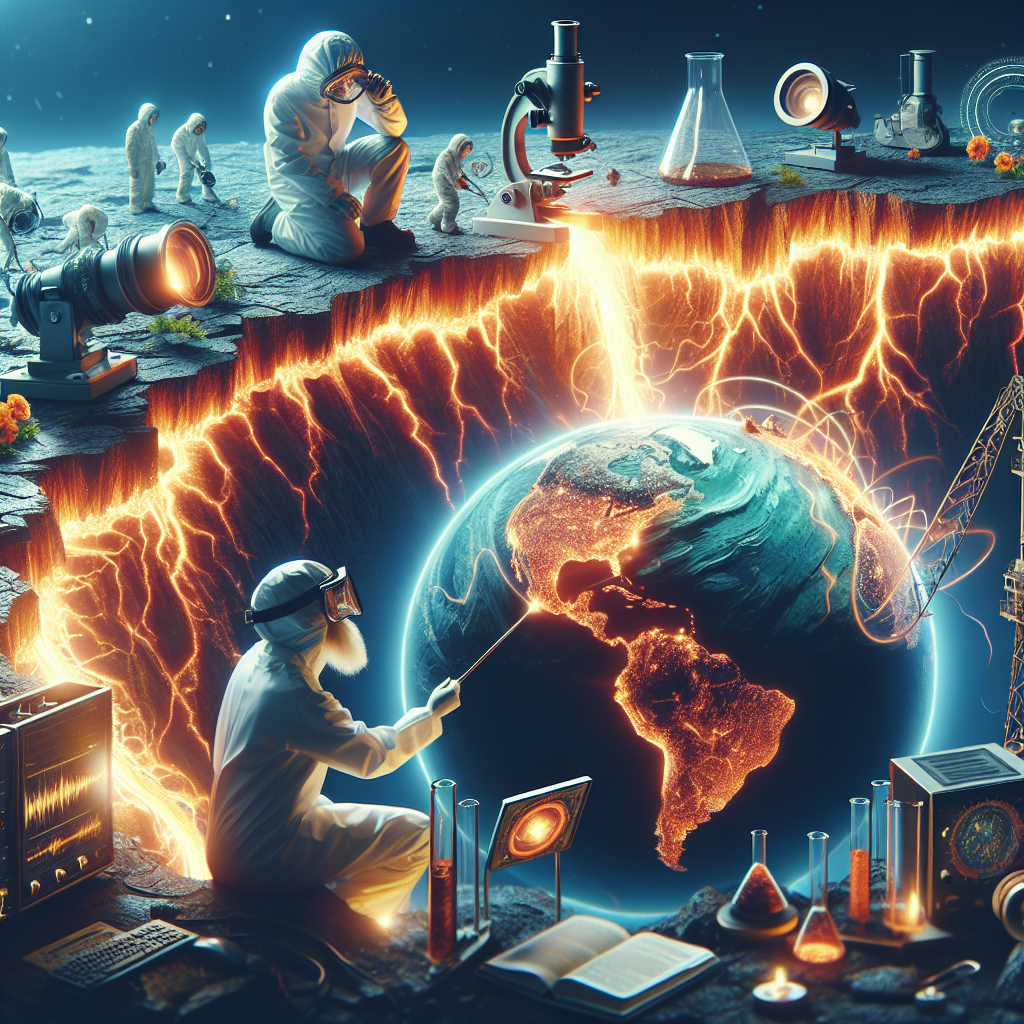The Ground’s Got the Jitters
Ever wonder why some places are always shaking, experiencing earthquakes more than others, when we know these tremors cause the ground to move, which can wreak havoc on our cities and towns? It’s a real head-scratcher! In this article, we’re gonna dig into what makes the Earth rumble globally, figuring out what triggers them in the first place.
What’s an Earthquake, Anyway?
An earthquake is basically the Earth’s spontaneous jiggles, happening when the surface throws a sudden burst of energy our way, leading to these intense vibrations. This quick release, known as a seismic wave, is all thanks to rocks underground suddenly shifting or snapping. Most earthquakes pop up where tectonic plates butt heads or along fault lines, but volcanoes, landslides, and even explosions can also kick them off.
They specifically happen when there’s a swift shift of rock within the Earth’s lithosphere. Imagine pressure building up deep below; eventually, it just has to explode, and that sudden blast shoots out seismic waves, causing an earthquake.
Fault Lines: The Earth’s Scar Tissue
What do fault lines have to do with earthquakes, you ask? Well, fault lines are these cracks and breaks in the rock segments beneath the Earth’s surface. These fissures can vary wildly in size, from just a couple of inches to thousands of miles long. California, for example, is home to some of the USA’s most massive fault lines, with seven big ones chilling in the San Francisco Bay area.
These gaps in the Earth’s surface mean that when tectonic plates start to shimmy, bits of rock easily break off and fall away, *sparking* an earthquake. The bigger the fault lines get, the more epic the earthquake becomes. Just think about California: if the Pacific and North American plates have even a tiny disagreement, that could mean some serious rock fracturing and movement along those fault lines.
Seismic Waves: Earth’s Energy Signals
A seismic wave is essentially the name for the energy that zips through the Earth’s layers whenever there’s a sudden movement. We’ve been keeping tabs on earthquakes for over 4,000 years, and these days, a seismometer is our go-to gadget for measuring these energy waves. It works by logging ground movements and vibrations. This clever device doesn’t just pinpoint and predict earthquakes; it’s also key to studying the Earth’s inner workings.
Simply put, it gages the Earth’s ups and downs using a weight on a spring, which bobs according to ground vibrations. A pen attached to it then scribbles these movements onto paper each time the weight shifts.
Tremors: The Earth’s Whispers
You might’ve heard the word “tremor” thrown around instead of “earthquake.” It’s the term we use for any seismic rumble that isn’t quite an earthquake – basically, anything below a certain size. Sometimes, these little shakes can be precursors, hinting that a bigger earthquake is on its way, and we call those “foreshocks.” But, let’s be real, they’re not always the most reliable tip-off that something massive is brewing.
How We Size Up a Quake
Earthquakes are measured by their oomph using the Richter scale. Charles Richter dreamt up this scale in 1935, and it quickly became the universal way to gauge an earthquake’s strength. The Richter scale is a set of numbers that clues us in on an earthquake’s power, operating on a logarithmic system. For instance, a magnitude 3.0 earthquake packs about 10 times the amplitude of one scoring 2.0. This scale was used hand-in-hand with a seismometer, which could sniff out earthquakes from roughly 62 miles away.
Each step up on the Richter scale means a tenfold increase in amplitude.
More Than Just Earthquakes
Is the Richter scale *just* for measuring earthquakes? Nope! The scale itself can actually be used to figure out how powerful any event impacting the Earth’s surface really is. You can see this throughout history with various events that have been logged using the scale. For instance, both the Nagasaki Atomic bomb explosion and an earthquake in Lancashire registered the same on the Richter scale.
Both those events hit around a 5 magnitude on the Richter scale, indicating that 32 kilotons of seismic energy were let loose during these happenings.
Land of the Quakes
Which country experiences the most earthquakes? That would be Japan, hands down. Japan has racked up the most recorded earthquakes, and that’s because it’s perched on one of the most seismically active spots on the planet. The world’s densest seismic network is tucked away beneath Japan, meaning it’s way more likely than other places to feel regular tremors.
History’s Deadliest Shakes
The Shaanxi Catastrophe
You might assume the most deadly earthquake ever would also be the biggest, but that’s not always the case. Historically, the deadliest earthquake on record happened in Shaanxi, China, back in 1556. This incredibly powerful quake tragically claimed around 830,000 lives. When the Richter scale came into being in the 1930s, scientists took a stab at estimating what magnitude this particular earthquake might have hit. Their predictions suggested it would have been somewhere between 8.0 to 8.3 on the Richter scale.
Other elements, beyond just sheer size, can crank up an earthquake’s deadliness. Things like the surrounding environment and safety measures really play a part in how many lives are lost.
Mother of All Quakes
The Valdivia and Indian Ocean Tremors
The champ of earthquakes on record was the Valdivia earthquake in Chile in 1960, hitting a whopping magnitude of 9.5. This behemoth of a quake triggered a tsunami, and together, they tragically killed about 5,700 people. Close behind, the second biggest earthquake ever recorded was the 2004 Indian Ocean earthquake, which unleashed a truly devastating tsunami.
It clocked in at a magnitude of 9.3 and, heartbreakingly, ended up taking around 230,000 lives across India, Sri Lanka, Thailand, and Indonesia.
Living with Earth’s Dynamic Dance
An earthquake, at its core, is the Earth’s layers suddenly doing a little jig, causing all that pent-up energy to crank out seismic waves. While we can’t escape these monstrous natural shows, we can absolutely do tons to get ready for them. As technology has really kicked into gear, our knack for measuring, predicting, and prepping for earthquakes has seriously taken off in recent years.
This means that, most of the time, earthquakes don’t cause the same level of human destruction they once did, but that’s still no excuse to just brush them off. As long as our Earth keeps on moving, we’ll always be feeling those quakes.




